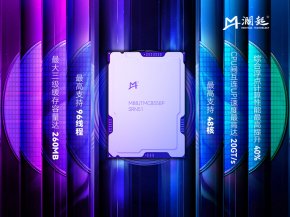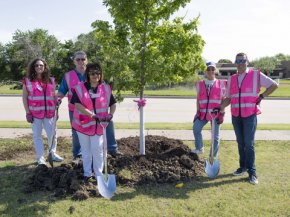OSAKA, Japan -- (BUSINESS WIRE) --
Takeda Pharmaceutical Company Limited (TSE:4502/NYSE:TAK) (“Takeda”) today announced new data that further investigates the long-term safety and efficacy of TAKHZYRO® (lanadelumab-flyo) injection in patients with hereditary angioedema (HAE) 12 years of age and older studied in the ongoing Phase 3 HELP (Hereditary Angioedema Long-term Prophylaxis) Study™ Open-label Extension (OLE). The analyses, being presented at the 2019 American College of Allergy, Asthma and Immunology (ACAAI) Annual Meeting in Houston, Texas from November 7-11, showed that TAKHZYRO continued to prevent HAE attacks at a rate similar to that observed in the pivotal HELP Study, in patients who received treatment for a mean duration of 19.7 (0-26.1) months.1, 2 The analyses will also be published in the November issue of ACAAI’s journal Annals of Allergy, Asthma & Immunology.
The original Phase 3 HELP Study was conducted in 125 patients over 26 weeks making it the largest randomised, controlled prevention study in HAE, with the longest active treatment duration, to date.3 The ongoing HELP Study OLE is designed to evaluate the long-term safety (primary endpoint) and efficacy of TAKHZYRO and is expected to be completed in November 2019. These analyses included 109 rollover patients, who were originally evaluated in the HELP Study, and 103 eligible non-rollover patients who did not participate in the initial study but had experienced at least one attack in 12 weeks.1, 2, 4
Results from the HELP Study OLE showed that the safety profile of TAKHZYRO was consistent with the original findings from the HELP Study, with treatment-related treatment emergent adverse events (TEAEs) occurring in 50% of patients (n=106).2 In addition, TAKHZYRO 300 mg every 2 weeks reduced the rate of attacks, attacks requiring acute treatment, and moderate to severe attacks (secondary efficacy endpoints). The mean attack rate was reduced by 87% overall compared with baseline (N=212). Similarly there was an overall reduction of 92.6% in the rate of attacks requiring acute treatment (N=212) and 83.6% in the rate of moderate/severe attacks versus baseline (N=212).1 An exploratory analysis showed that the overall maximum attack-free period lasted ≥12 months in 58% of patients (n=209) and ≥6 months in 78% of patients (n=209) following the first regular treatment dose.1
“While the original HELP Study data has given us a strong understanding of how TAKHZYRO can prevent HAE attacks, the results of these analyses provide encouraging insight into its potential safety and efficacy over a longer duration,” said Marc A. Riedl, M.D., investigator in the HELP Study OLE and Professor of Medicine and Clinical Director, U.S. Hereditary Angioedema Association Center at the University of California, San Diego. “As HAE is a lifelong condition, the long-term efficacy and safety of prophylactic medications are important factors in developing individualized HAE management plans. The HELP Study OLE analyses are a positive step forward in understanding the long-term effects of TAKHZYRO, and we look forward to gathering and sharing additional data as the study progresses.”
In the study, TEAEs occurred in ~95% of patients (N=212) and were mostly mild or moderate in severity. The TEAEs related to treatment that were reported in more than 5% of patients are injection site pain (33.9% of rollover patients [n=37] and 42.7% of non-rollover patients [n=44]), injection site erythema (11.9% of rollover patients [n=13] and 15.5% of non-rollover patients [n=16]) and injection site bruising (4.6% of rollover patients [n=5] and 9.7% of non-rollover patients [n=10]).2
TEAEs of special interest were reported in eight (3.8%) patients; none were serious. Six (2.8%) patients discontinued from the study due to TEAEs, one of which was treatment related (injection site papules). No treatment related, serious TEAEs or deaths occurred. Anti-lanadelumab antibodies were detected in 21 (9.9%) patients, including six (2.8%) positive for neutralizing antibodies with no discernible clinical impact.2
“Recurrent and unpredictable attacks of swelling can be debilitating and impact those living with HAE in a number of ways,” said Donatello Crocetta, M.D., Global Medical Head, Rare Immunology Franchise, Chief Medical Office, Takeda. “Over the last 10 years, we have been committed to continuous innovation in HAE to help address patients’ unmet treatment needs. These findings build on our knowledge about HAE and are valuable in better understanding the benefits that preventive treatment with TAKHZYRO could bring to patients in the longer term.”
Details on the HELP Study OLE abstracts being presented are as follows:
-
Long-Term Efficacy of Lanadelumab: Interim Results from the HELP OLE Study Abstract #P1591
- Friday, 8 November, 5:15-5:30pm
- Long-Term Safety of Lanadelumab in Hereditary Angioedema (HAE): Interim Results From the HELP OLE Study Abstract #P1582
- Friday, 8 November, 5:00-5:15pm
- Friday, 8 November, 4:30-4:45pm
- Long-Term Lanadelumab Treatment Improves Health-related Quality of Life: HELP OLE Study Interim Findings Abstract #P1564
The HELP (Hereditary Angioedema Long-term Prophylaxis) Study™ Open-label Extension (OLE) is an evaluation of the long-term efficacy and safety of TAKHZYRO in hereditary angioedema (HAE) patients of at least 12 years of age and older. Two hundred and twelve patients received treatment with TAKHZYRO at the start of the OLE Study (109 rollover patients originally evaluated in the HELP Study and who continued into the OLE, and 103 eligible patients who did not participate in the HELP study but who had experienced at least one attack in 12 weeks). Rollover patients received a dose of 300 mg TAKHZYRO on Day 0 and then every two weeks after their first attack. Non-rollover patients were treated with one 300 mg dose every two weeks, beginning on Day 0. One hundred and ninety-three participants completed at least 12 months of treatment and 27 participants completed at least 24 months of treatment.1, 2
About Hereditary Angioedema
Hereditary angioedema (HAE) is a rare genetic disorder that results in recurring attacks of oedema – swelling – in various parts of the body, including the abdomen, face, feet, genitals, hands and throat. The swelling can be debilitating and painful.5, 6, 7 Attacks that obstruct the airways can cause asphyxiation and are potentially life threatening.6, 7 HAE affects an estimated 1 in 10,000 to 1 in 50,000 people worldwide. It is often under-recognized, under-diagnosed and under-treated.5, 8
About TAKHZYRO® (lanadelumab-flyo) Injection
TAKHZYRO is a fully human monoclonal antibody that specifically binds and decreases plasma kallikrein and is indicated for prophylaxis to prevent HAE attacks in patients 12 years and older. TAKHZYRO is formulated for subcutaneous administration and has a half-life of approximately two weeks.9 TAKHZYRO is intended for self-administration or administration by a caregiver. The patient or caregiver should be trained by a healthcare professional.9
U.S. Indication and Important Safety Information
INDICATION
TAKHZYRO (lanadelumab-flyo) is indicated for prophylaxis to prevent attacks of hereditary angioedema (HAE) in patients ≥12 years of age.9
IMPORTANT SAFETY INFORMATION
Hypersensitivity reactions have been observed. In case of a severe hypersensitivity reaction, discontinue TAKHZYRO administration and institute appropriate treatment.9
Adverse Reactions: The most commonly observed adverse reactions (≥10% and higher than placebo) associated with TAKHZYRO were injection site reactions consisting mainly of pain, erythema, and bruising at the injection site; upper respiratory infection; headache; rash; myalgia; dizziness; and diarrhea. Less common adverse reactions observed included elevated levels of transaminases; one patient discontinued the trial for elevated transaminases.9
Use in Specific Populations: The safety and efficacy of TAKHZYRO in pediatric patients <12 years of age have not been established.9
No data are available on TAKHZYRO in pregnant women. No data are available on the presence of lanadelumab in human milk or its effects on breastfed infants or milk production.9
To report SUSPECTED ADVERSE REACTIONS, contact Dyax Corp., a Takeda company, at 1-800-828-2088, or FDA at 1-800-FDA-1088 or www.fda.gov/medwatch.
For U.S. audiences, please see the full Prescribing Information including Medication Guide for TAKHZYRO®.
For EU audiences, please see the Summary of Product Characteristics (SmPC) for TAKHZYRO®.
About Takeda Pharmaceutical Company Limited
Takeda Pharmaceutical Company Limited (TSE:4502/NYSE:TAK) is a global, values-based, R&D-driven biopharmaceutical leader headquartered in Japan, committed to bringing Better Health and a Brighter Future to patients by translating science into highly-innovative medicines. Takeda focuses its R&D efforts on four therapeutic areas: Oncology, Gastroenterology (GI), Rare Diseases and Neuroscience. We also make targeted R&D investments in Plasma-Derived Therapies and Vaccines. We are focusing on developing highly innovative medicines that contribute to making a difference in people's lives by advancing the frontier of new treatment options and leveraging our enhanced collaborative R&D engine and capabilities to create a robust, modality-diverse pipeline. Our employees are committed to improving quality of life for patients and to working with our partners in health care in approximately 80 countries and regions.
For more information, visit https://www.takeda.com.
References
2 Johnston DT, Banerji A, Nurse C, et al; for the HELP OLE Study Investigators. Long-Term Safety of Lanadelumab in Hereditary Angioedema (HAE): Interim Results From the HELP OLE Study. ACAAI 2019. Abstract #P158.
3 Banerji A, Riedl MA, Bernstein JA, et al; for the HELP Investigators. Effect of lanadelumab compared with placebo on prevention of hereditary angioedema attacks: a randomized clinical trial. JAMA. 2018;320(20):2108-2121.
4 Lumry WR, Maurer M, Megerl M, et al; for the HELP OLE Study Investigators. Long-term Lanadelumab Treatment Improves Health-related Quality of Life: HELP Open-label Extension Study Interim Findings. ACAAI 2019. Abstract #P156.
5 Cicardi M, Bork K, Caballero T, et al; on behalf of HAWK (Hereditary Angioedema International Working Group). Evidence-based recommendations for the therapeutic management of angioedema owing to hereditary C1 inhibitor deficiency: consensus report of an International Working Group. Allergy. 2012; 67(2):147-157.
6 Zuraw BL. Hereditary angioedema. N Engl J Med. 2008;359(10):1027-1036.
7 Banerji A. The burden of illness in patients with hereditary angioedema. Ann Allergy Asthma Immunol. 2013;111(5):329-336.
8 Longhurst HJ, Bork K. Hereditary angioedema: causes, manifestations, and treatment. Br J Hosp Med. 2006;67(12):654-657.
9 TAKHZYRO® (lanadelumab) Summary of Product Characteristics.
 赛昉基于RISC-V的JH-7110智能视觉处
赛昉基于RISC-V的JH-7110智能视觉处 全球专家和从业者携手应对海洋管
全球专家和从业者携手应对海洋管 持续性能优化,从容应对挑战——
持续性能优化,从容应对挑战—— Bentley 软件公司宣布 Michael Campbe
Bentley 软件公司宣布 Michael Campbe 美利肯公司荣膺“2022年全球最具
美利肯公司荣膺“2022年全球最具 ABB: Q1 2022 Results
ABB: Q1 2022 Results 芯原低功耗蓝牙整体IP解决方案已
芯原低功耗蓝牙整体IP解决方案已 粉色口红和园艺高手:Mary Kay In
粉色口红和园艺高手:Mary Kay In 缅怀英烈 献礼八一
缅怀英烈 献礼八一 清明时节忆父友
清明时节忆父友 人民航空先驱郑德烈士英名上
人民航空先驱郑德烈士英名上 祭奠人民航空先驱郑德烈士仪
祭奠人民航空先驱郑德烈士仪 展文明使者风貌 助力半马赛
展文明使者风貌 助力半马赛 大港油田勘探开发研究院举办
大港油田勘探开发研究院举办 开心运动迎“五一”
开心运动迎“五一” 2019年第八届渤海之夜健身健
2019年第八届渤海之夜健身健 灵魂潮汐手游免费升级,灵魂
灵魂潮汐手游免费升级,灵魂 海南网红直播基地正式揭牌成
海南网红直播基地正式揭牌成 天津滨海:正月十五闹元宵
天津滨海:正月十五闹元宵 彦倾《远嫁的姑娘》MV首播新
彦倾《远嫁的姑娘》MV首播新 马天尼实现可持续发展里程碑
马天尼实现可持续发展里程碑 21世纪的能源创新:Graforce等
21世纪的能源创新:Graforce等 可杀灭 Covid-19的Violeds技术已
可杀灭 Covid-19的Violeds技术已 参加线下沙龙,拓宽你的融资
参加线下沙龙,拓宽你的融资
